Last Updated on September 17, 2017 by Steve Hogg
Prior to reading this post, it is worthwhile reading the post TT Rider as the post below is intended to be read with the TT Rider post in mind.
The post below borrows heavily from an article I wrote that appeared in the September 2002 issue of Bicycling Australia entitled “Foundations of Positioning”. When I get the time, the original article will be posted in Articles under the Publications tab.
IRONMAN TRIATHLON POSITION: How marketing overcame reality for some.
While I would never call myself a triathlete, I competed in my first triathlon in 1983 and have dipped in and out of the sport occasionally since. Why?
I’m a bike fitter and it is hard to understand what a triathlete goes through running off the bike unless the experience is personal. I’m not trying to establish any credibility here as a triathlete. I’ve got ‘football shoulders’, meaning I’m a crap swimmer; have too many severe joint injuries to be able run consistently without injury and am a reasonable bike rider. So while I’ve done 20 or so shorter distance tri’s during my life, a triathlete I will never be. I have paid attention to the development of the sport though. As an outsider looking in, I came to the belief early that there is an unreasonable emphasis on aerodynamics in triathlon, particularly Ironman triathlon, and that this overemphasis is the cause of injury and diminished performance in many triathletes.
A bit of history follows.
The very first aero bars available in my part of the world ( and probably elsewhere too) were the Nitto’s pictured below.
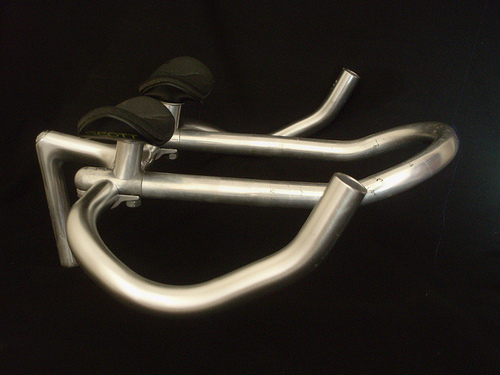
Forget the bull horn bars in the pic; it was rare to find a pair of Nitto’s attached to bullhorns in the late 80’s / early ’90’s in triathlon. More often than not they were attached to road bars at the time. The Nitto aero bars became a big deal after Greg Lemond used them to win the ’89 TT finale of the Tour, coming from 51 seconds down to win the Tour from Fignon by 8 seconds on a mainly downhill, 25km course from Versailles to the Champs Elysee. As a pertinent digression, I don’t think the use of aero bars was the major reason that Lemond made up a significant time gap at over such a short distance.
Explanatory Note no.1: Lemond’s ’89 win over Fignon:
There are 2 videos below.You will note in the video footage of the ’89 Prologue, neither rider obviously favours one side in the sense of dropping one hip. They both look GOOD when viewed from behind. You will also note that in the final stage TT, Fignon hangs to the right and drops the right hip on every right side pedal down stroke.This is particularly evident around 4 mins into the second video where the camera car is behind Fignon for some time. His form looks like CRAP. When the right hip drops like that, it puts a hole in the rider’s torque curve. That is, the riders right hip is moving towards the pedal as the rider is trying to apply force to the pedal. Result?
Lower and jerkier torque production equals less power. At the same time, he isn’t rebounding all the way to the centre line which means that the left leg is having to reach further than normal; also equalling a probable drop in power. Why?
Because Fignon had been suffering from the mother of all saddle sores on the right side for the latter stages of the ’89 Tour. Magazine photos of the time showed that 2/3 of the right side of his seat had been cut away to try and relieve pressure. However, for the final stage TT Fignon rode an unmodified seat after a sleepless night of pain. He was foolish to shun the use of aero bars but he lost the 10 seconds that decided the Tour in the final kilometre. Aero bars are not worth 10 seconds per km.
Prologue (and bear with me until you see Fignon, it wasn’t possible to edit the video length) Lemond starts 4 minutes 35 seconds in and Fignon at 7 minutes 28 seconds.
Final stage TT (also wasn’t possible to edit length but Lemond and Fignon appear early in the video)
French friends involved in elite cycling at the time, told me that Fignon left the podium and was admitted to hospital that evening for surgery on the cyst. In my view, Fignon was not able to give his best on the day because he had a problem which was affecting his health, comfort and general ability to apply pressure to the pedals. Don’t forget that he had cracked Lemond on 2 out of 3 of the last mountain stages which is where he got his 51 second lead from prior to the final stage TT. On the other day of those last 3 mountain stages, Lemond retured serve by cracking Fignon. For mine, the ’89 Tour was the last GREAT tour.
I do not doubt for one moment that aero bars helped Lemond. Nor am I trying to detract from a great comeback victory by Lemond. However, I think the full story of that victory was more complicated than the “Lemond only won because he had aero bars” scenario which was what I heard day in, day out for about 12 months after the ’89 Tour.
So it became a ‘fact’ that Lemond only won because of aero bars, and as it was the fastest Tour TT ever ridden (slightly downhill course with a tailwind) every triathlete went out and bought a pair. After all, you could buy performance. Lemond had ‘proven’ it and the marketing guys loaded it on in cycling and tri mags.
That started a mindset that is still around, and not just in triathlon circles. We all want something for nothing and aero bar marketing tapped into that. Spend money on aero equipment equals extra performance. Just spend money!
There was a practical problem though. In the late ’80’s, most road TT bikes had 700c rear wheels and 650c front wheels and while a few people used them in tri’s, the overwhelming majority used road bikes. Stems were quill type as per the Nitto pic at the start of this post. So a whole lot of tri guy and gals mounted Nitto aero bars on their road bikes as there were no specialist ‘tri’ bikes at that time. And guess what?
They couldn’t reach them.
Because –
1. There was no reach adjustment in the early Nitto aero bars. One size fitted all.
and
2. Aero bars with elbow pads centred over the bar that they are mounted on require a shorter stem for best fit on the aero bars than would be used for a given rider using road bars alone. Technical knowledge wasn’t widespread in tri circles in the late ’80’s / early ’90’s, so most took the easiest route. Rather than shorten the stem, they moved the seat forward. That worked in the sense of making it easier for the athlete to reach the aero bars. So it became another ‘fact’ that triathletes needed to sit much further forward than road riders, at least in the minds of many doing it, simply because of the lack of adjustment potential in early aero bars.
Fast forward to the ’92 Barcelona Olympics where Chris Boardman won the Individual Pursuit using a technology laden Lotus bike. The Lotus track bike had aero everything, even chain rings, and there was a lot of coverage of the technology in cycling, tri and mainstream media. This cemented in many tri minds that a focus on aerodynamics and aero equipment was everything and Lotus released a road / tri version.
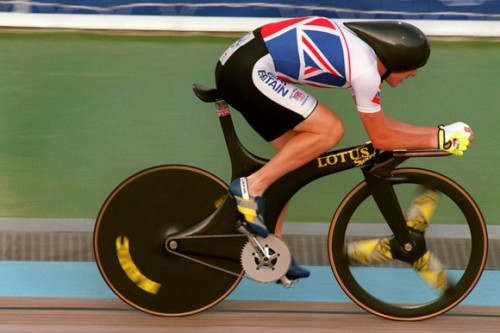
There were several jarring notes to that assessment, but at the time, I got sick of highlighting to tri people who wanted aero, aero, aero “just like Boardman”, that there is a large difference between a position that is tolerable for a 4km pursuit at close to 60 km/h average speed versus what is sensible for a 180km Ironman bike leg at 2/3 of that pace and less than 1/3 the power output (outright elite contender), or just over half that pace and 1/8 of the power output (average age grouper).
I also got sick of pointing out that all Lotus frames of the time had 72 degree seat tube angles. Even allowing for Boardman sitting towards the nose of the seat, his effective seat tube angle is no more than 74 degrees in the pic above. Not 78 or 80 degrees as was becoming a bit of a tri thing in the late 80’s / early 90’s.
Note: That 4 – 6 degrees difference in seat tube angle might not sound like a lot, but for a male of average height like me (5’11”) it represents 48 – 60mm of seat movement further forward than Boardman rode.
Lastly, relative distances and power outputs aside, all ignored the fixed wheel effect of Boardman’s Lotus track bike. The forward movement of a fixed wheel track bike allows the momentum of bike and rider to be carried through the dead zone in the pedal stroke because there is no slack in the transmission. Far more so than on real world tri courses with hills, undulations and winds from various directions while using freewheel transmissions. Move forward too far over the bottom bracket and you increase the size of the dead zone either side of top and bottom dead centre. This is apparent to anyone who tries climbing while seated on a steep seat angled TT bike versus the same person on a road bike. Sitting further forward is also much easier to cope with on a track bike because of the fixed gear and shorter duration of effort.
Another thing that further separated the cycling component of triathlon from mainstream cycling was the tri mindset, and for that cyclists bear a large part of the blame. Many triathletes in the early days didn’t have much of an idea of how to ride in a bunch, particularly when using aero bars. In my part of the world (and probably elsewhere) a lot of tri people got yelled at and otherwise abused for making mistakes or using their aero bars while riding in bunches. There developed a bit of an US and THEM mentality on both sides. For a lot of tri people, it became imperative to be seen while riding as something other than a cyclist. The usual signs of differentiation at the time were aero everything as far as equipment and position were concerned,while wearing uncoordinated fluoro coloured clothing. I think this was a lost opportunity for cycling in the sense that triathlon as a sport felt “We’re innovative and different. We don’t listen to them” whereas those same tri people listened to running coaches and swimming coaches while at the same time walking away from any body of cycling related knowledge, or alternately, cherry picking according to “aero is everything” beliefs.
The final straw was the popularisation in tri circles of the idea that prioritising aerodynamics as an essential to Ironman performance was ‘fact’; that anyone could quickly achieve an aerodynamic position by rotating their entire position forward around the bottom bracket. This fitted in with those preconditioned to moving their seats forward in the quest for aero. If forward is good, further forward just had to be better.
Anyway, the upshot of all of the above, as well as other influences, was that triathlon went down a marketing dominated ‘everything is subsidiary to aerodynamics’ path. So much so, that they have influenced road TT bike design as well.
So let’s start with a few facts.
1. An Ironman triathlon is not a TT in the sense of a road TT. The pace is not as high and cannot be due to the much longer duration of an Ironman bike leg and because of the need to save enough energy to run effectively once off the bike. Riding absolutely flat out at TT pace in an Ironman equals falling in a heap during the run. So realistically, the pace is that of a 75% effort road TT.
2. An Ironman bike leg takes 4.5 – 5 hours for a hotshot and 5 – 6 hours for a typical age grouper. That is a long time to spend in more or less one position. To my mind this means that there needs to be a greater emphasis on comfort than outright speed because an Ironman bike leg is not about outright speed; it’s about relative speed. It’s about riding fast enough to be competitive and still having plenty left in the tank for the run. That precludes the athlete from giving everything on the bike.
3. Triathletes are viewed by the marketing arm of the cycling and multisport industry as a milch cow to be milked. Come up with a reasonable sounding line of bullshit and it will sell. This has been proven many, many times. Mainstream cycling is not immune to this either, especially recently, with the entry into the sport of a lot of middle aged people with money to spend.
4. Lastly, the “aero is everything” mentality or undercurrent has created a large number of customers for me who ride radical forward position style bikes. These bikes have their place, but in my view that place is:
- NOT as the sole training and racing bike for a majority of people. Better to have a more conventional bike for most training and ride the TT bike once a week to maintain appropriate motor patterns. Then switch to the TT bike exclusively in the weeks before an event.
- NOT for dysfunctional, don’t stretch, 50 hour a week office workers who complete 12 – 14 training sessions a week without appropriate emphasis on body maintenance and structural improvement. That would describe a large chunk of the age group field at many Ironman tris.
Now let me be clear. Anyone can get on a steep seat angle, forward position TT bike and ride it. The question is to what effect and at what risk of long term injury?
I am happy to believe that my clients comprise a skewed sample of humanity as most of them seek our help because they have an issue with their bike position. Even so, I see a disproportionate number of triathletes who ride TT bikes in radical forward positions who have problems. Simply, when the seat is moved too far forward, there is a weight transfer forward which has to be supported by the upper body. If this is too exaggerated or not appropriate for the rider, the following problems can arise.
NEUROLOGICAL MISMATCH:
Quote by Andrew Richards, 2001. “Dr Roger Sperry, 1980 Nobel Prize recipient for brain research, demonstrated that 90% of the energy output of the brain is used in relating the physical body to gravity. Only10% has to do with thinking, metabolism and healing”
Given that is the case, what are the muscles most needed to resist against the omnipresent force of gravity?
Muscles that act posturally (i.e. that work to allow a body position to be held in space).
What are the muscles most used to propel a bike?
Muscles that act phasically (that work dynamically to allow movement).
The central nervous system (CNS) will always prioritise the muscles that act posturally because in evolutionary terms, it is a precondition of efficient movement that we are able to hold a position in space (posture) while we do so. So it is imperative if we want to perform to potential on a bike, that we have a position on the bike that recruits the minimum amount of postural musculature. That way the CNS can devote more of it’s energy both neurologically and physiologically, to switching the lower priority, power producing muscles that propel the bike on and off in the most precise and efficient sequence. The only way to do this is to sit with the majority of the weight borne underneath the pelvis. If the position is rotated too far forward around the bottom bracket, there is a substantial weight transfer forward which has to be borne by arms, shoulder complex and upper back which forces the recruitment of a large amount of musculature extraneous to the job of propelling the bike. This is to the detriment of power output unless aerodynamic gains offset the reduction in power output to the point where road speed increases. While this is possible, it is not common at the speeds that are common in Ironman racing. Particularly age group Ironman racing.
LOWER CROSSED SYNDROME (click on link for more)
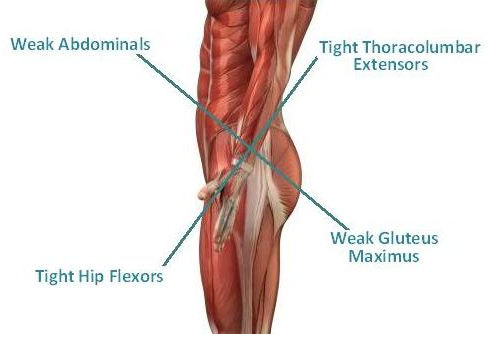
We live in a Western culture where we spend an inordinate amount of time sitting. 12 plus years x 6 hours a day at school, at work, in a car, bus or train going to and from work; watching TV, sitting at the computer and so on. The result of this is many, many people, certainly the majority of the clients I see, have tight hip flexors. Too much sitting cramps the hip flexors causing them to adapt by tightening and shortening and very few people stretch them out regularly. Why are tight hip flexors important?
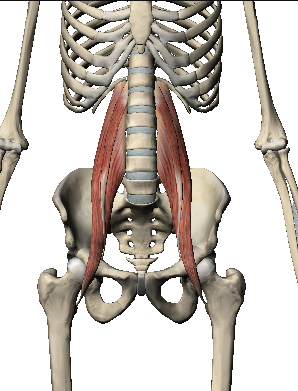
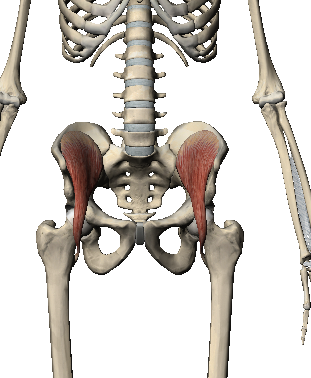
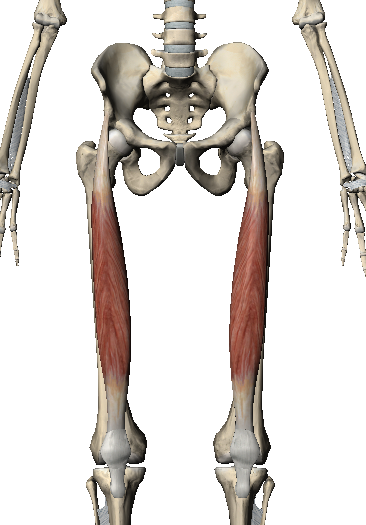
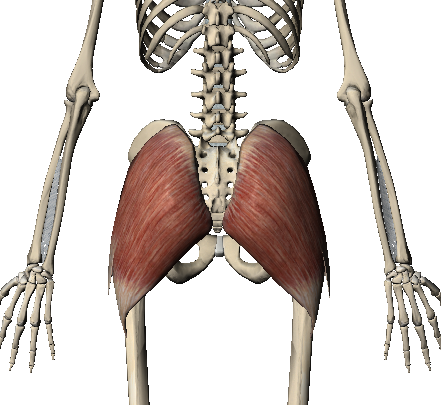
Because the gluteus maximus is the largest muscle in the body and one of the most powerful. It is also the prime extensor of the hip. If you want your upper leg, the primary lever in the pedaling action, to descend efficiently during the pedal stroke, then ideally, this is a muscle that you want switched on and strong, not mechanically and neurologically inhibited and weak. Addtionally, this tightness of the iliacus and psoas and consequent weakness of the glutes sets up a chain reaction of postural changes , which leads to tight spinal erectors
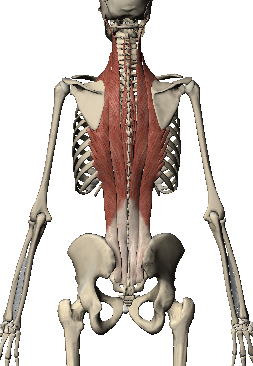
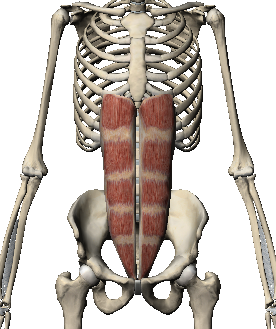
The nett effect of this is known as Lower Crossed Syndrome. Rotating too far forward around the bottom bracket reinforces this pattern of dysfunction in the many people already afflicted before they go near a bike, unless the bars are placed high enough to open up the angle between femur and torso. Much tri talk involves the claim that moving the seat forward while maintaining low bar position will also open up the femur / torso angle. It will, but given that many people suffer from Lower Crossed Syndrome a priori, the increased load on the front of the kinetic chain involved in pedaling from a too far forward seat position reinforces this pattern.
UPPER CROSSED SYNDROME (click on link for more)
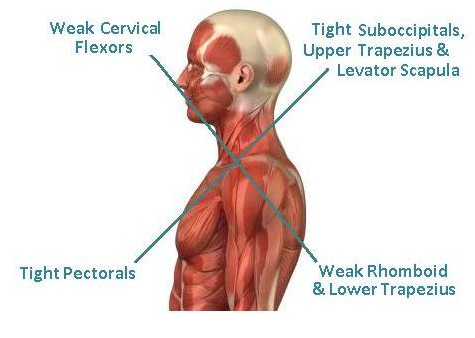
This is the upper body version of Lower Crossed Syndrome. Again, many people are afflicted because of lifestyle before ever they go near a bike. The key to understanding its effect on tri position is that Upper Crossed Syndrome is characterised by a humped upper back and forward carriage of the head. When the body is rotated too far forward around the bottom bracket in an effort to achieve a lower, more aerodynamic torso position for an athlete with this common dysfunction, a greater degree of neck extension is needed to raise the head enough to see forward. This leaves many tri people (and road TT riders) with two choices.
1. Look up occasionally, say every 50 metres or so, and risk crashing
OR
2. Put the neck and upper back muscles that allow the head to be lifted under a lot of pressure just to allow the athlete to see forward. What then happens to a greater or lesser degree, is that the upper trapezius
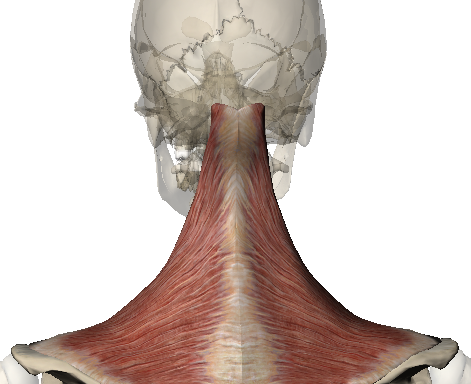
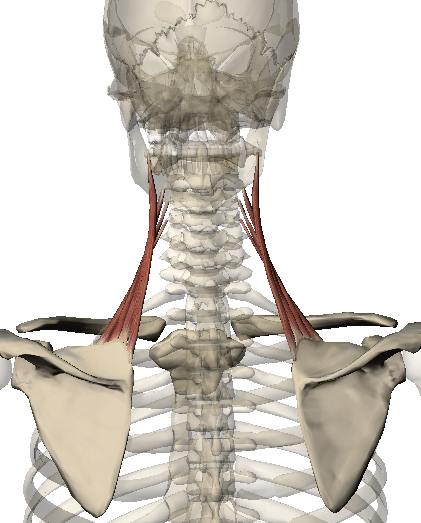
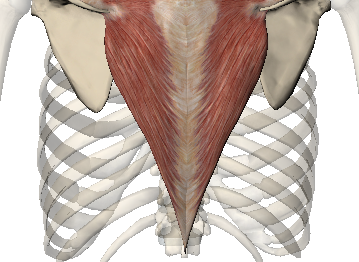

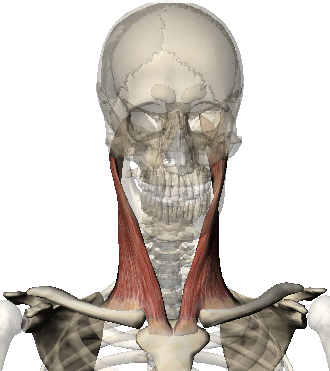
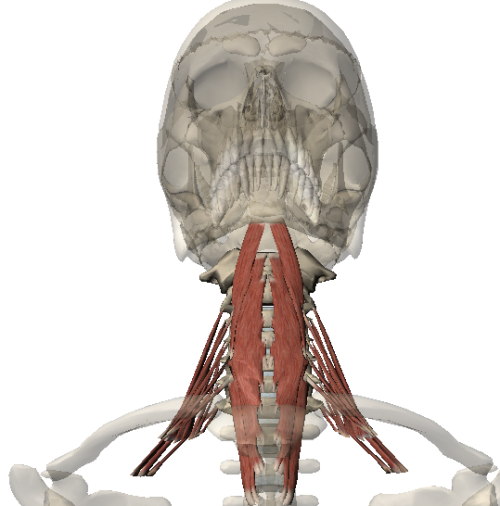
and the pectoralis major tightens
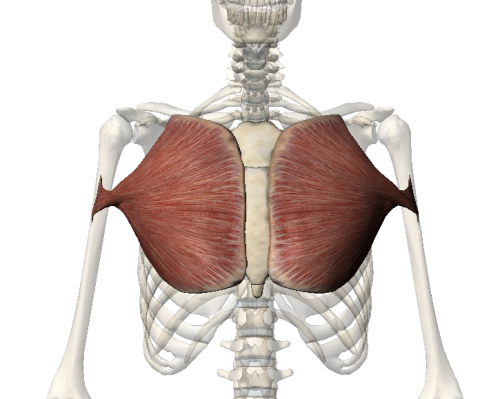
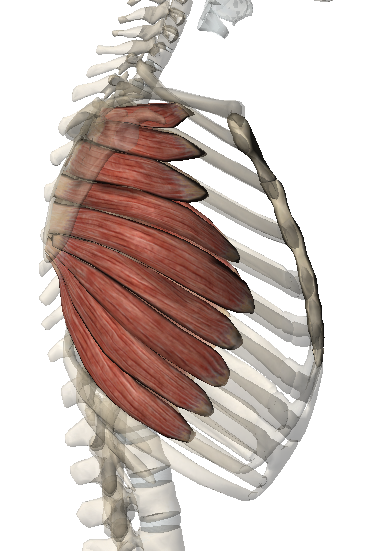
A lot of jargon I know, but the bottom line is that the shoulder complex that radical forward position uses to provide stability because of the forward transfer of weight and the need to bear it, becomes less stable and forces the recruitment of of even more postural musculature. This can only come at the cost of the power producing muscles that act phasically as outlined in NEUROLOGICAL MISMATCH above.
RESPIRATORY ISSUES
A side effect of Upper Crossed Syndrome is that tight upper trapezius muscles have a synergistic relationship with the scalenes
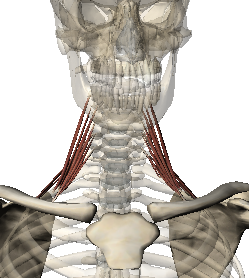
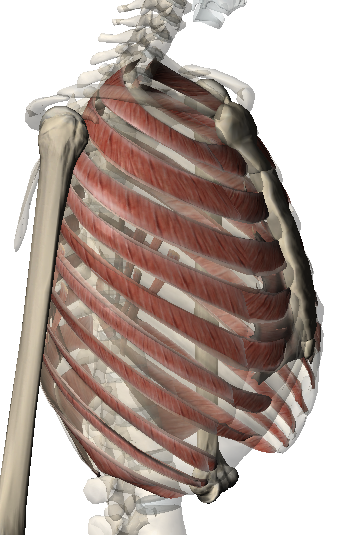
This brings about what is known as Paradoxical Breathing where chest breathing predominates over abdominal breathing. The mechanics of this, as far as I can see, are that Upper Crossed Syndrome causes a kyphotic (rounded) upper back which in turn is maintained by flexion of the trunk. This requires activity in the hip flexors and rectus abdominus as they are flexors of the trunk. This prevents the diaphragm from descending fully, hence afflicted tri people, and I see plenty, cannot use their full lung capacity. The implications for performance should be obvious. I don’t want to give the impression that this issue solely affects triathletes. It doesn’t. However, too far forward a bike position increases the negative effects.
Another interrelated issue is that there are 20 odd muscles of the torso that play a part in breathing. Of these, 18 have postural implications in that they can be used to breathe with, which means that they have to be able to relax. Or, they can be used to bear weight, resist pedaling forces and stabilise the upper body if forced to bear significant weight as a too far forward position does. This means that they can’t relax to the further detriment of breathing efficiency. See next paragraph
A reader of this blog, Marc Howe, pointed me at this article about how this issue is being addressed for the TT positions of the riders on some pro cycling teams. If you are a triathlete or road TT rider, take the time, click on the link and read it. It is important if real world performance is your aim. Once you’ve read it, realise that the negative effects spoken about in that article are magnified for Ironman racing because of the longer duration of effort on the bike leg.
PAIN
Anything that reduces comfort reduces performance slowly or quickly. Why?
When subject to pain, the body will autonomically self protect. How?
By increased activity in the muscles acting posturally and reciprocal inhibition of the power producing muscles that act phasically (as per NEUROLOGICAL MISMATCH). When a rider suffers from a sore crotch from bearing too much weight on the perineum or genitals and squirms around on the seat trying to find a comfortable spot, they have to enlist more postural musculature in an effort to stablise themself. In extreme cases, and I’ve seen plenty, this will involve the shutdown or near shutdown of the gluteals and a plethora of compensatory measures, all of which conspire to limit performance.
A sore upper back or neck will cause the upper body version of the same effect, as largely explained in UPPER CROSSED SYNDROME.
More over, I see a disproportionate number of Ironman competitors complaining of erectile dysfunction or genital discomfort, depending on their gender. If your position is such that it forces you to sit on the nose of your seat, supporting weight on soft tissue , DO NOT go and buy the latest tri seat with a heavily padded nose. These products are a marketing response to a physical problem caused by your bike position. The solution is to re evaluate and improve your position on the bike. Alternately, you could console yourself with the thought that you already have all the children you want; though I assume most people would still like to keep practising.
RELATIONSHIP TO GRAVITY
Many times I’ve had discussions similar to what I’ve written above with tri friends. Often I’ve been told “But Steve, you’re wrong. Nothing changes in relative position. All I am doing is rotating forward around the bottom bracket; nothing changes”. As a specious argument, this is world class! What about gravity?
As our relationship to gravity (position in space) changes, so do patterns of muscle enlistment. Sit upright on a chair with your arms held straight out in front of you. Now while maintaining the same position, lift your bum up off the seat and rotate forward until your hands contact the floor, trying as hard as you can to maintain the same relative body position. Once your hands contact the floor, try and convince yourself that in terms of weight bearing, “nothing has changed”. Anyone pushing this line is deluding themselves. All of the issues I’ve listed above come down to one thing; a less than ideal relationship to gravity while exerting force.
DIFFICULTY RUNNING OFF THE BIKE
A common transition area experience at T2 in an Iroman goes like this. Athlete finishes the bike leg and changes into running shoes. Goes to stand up and the hamstrings and lower back protest. Attempts to leave the transition area with bum sticking out and lower back and hamstrings protesting all the way. Finds that tucking the bum under and rolling the top of the pelvis rearwards relieves the discomfort but finds that kind of posture hard to maintain while running. Takes some kilometres to get into running stride and may or may not have further problems during the run.
When a rider sits too far forward, and if, for the reasons listed in LOWER CROSSED SYNDROME has gluteals that don’t work well, they can still ride, often quite effectively too. This is because cycling is a closed kinetic chain. There are pedals to push against. This means that even if the glutes aren’t working well, the action of the quadriceps in extending the knee will generate movement at the hip, with or without direct involvement of the gluteals. Riding in this inhibited state localises much of the pedaling load to the quads. Doesn’t matter. If you train hard enough and smart enough, the quads will cope, at least on the bike because they have a high proportion of Fast Twitch Fatigue Resistant muscle fibres. But one of the quads, the rectus femoris is also a hip flexor. And the psoas and iliacus, also hip flexors, have been working hard in a compressed position because of the overly low torso position of the rider on the bike. Still no problem………………….that is until the rider dismounts the bike in T2 and attempts to stand up, which to do so requires a lengthening of and increase in tension in the hip flexors. Then the shortened and hammered hip flexors further reciprocally inhibit the glutes and pull the top of the pelvis and lower back forward because that is where they originate. With the glutes largely out of the way, the hamstrings then attempt to pull the pelvis back into position, but their attachment point at the ischium (sit bones) at the base of the pelvis offers far less lever length on the pelvis than that which the hip flexors are able to achieve. All of which explains the scenario above.
In years past I have had Ironman athletes complain to me of this perceived overload of the hamstrings apparent when leaving transition at T2 and suggest that the solution was moving further forward, that they had overused their hamstrings on the bike! In reality, the opposite was the case. They had underused their hamstrings on the bike and the only reason for the the problem was a combination of too far forward a seat position and too low a bar position causing the reciprocal inhibitions explained above which becomes very apparent when the athlete stands erect and has to lengthen those tight, short, hammered hip flexors. If you have a good Ironman bike position and have done the training, you should be at race pace for the running leg within 200 metres of leaving transition.
WHAT TO DO
Option 1. Read TT Rider and position yourself as suggested in No. 2, Achievable Position. Done properly, this should allow you to train and race on your tri bike without problems for Olympic distance. For Ironman, raise your bars 20mm as a rule of thumb. Longer distance and longer duration means that the comfort / aerodynamics equation needs to be biased more towards comfort for real world, injury free performance.
Option 2. If you can prove to your own satisfaction that you can maintain a radical forward position for 180 kms and that the position:
a) Is beneficial to your cycling performance
b) Doesn’t hinder you running off the bike
then do so; but as a long term insurance policy, do most of your training on a well set up standard road bike with one reasonable length ride per week on the tri bike. As a race approaches, make your tri bike ride your long ride for the week. In the 2 weeks prior to racing; ride your tri bike exclusively. Once the race is done, move back to the road bike for several weeks.
For those who try option 2, be aware that a forward position pushed too far will cause semi permanent negative changes to posture and function over time. To offset the effects of this you need to stretch regularly and properly and use the road bike most of the time as outlined above. It also helps if you picked your parents well.
Above all, don’t listen to marketing driven arguments like “The top ten in Hawaii all rode full on, bum up, head down, ultimate aero positions” and think that even if true, that it means that you should too. With rare exceptions, the top 10 in Hawaii are pros or live their lives like pros. They do the same number of training sessions a week as a committed age grouper, with the significant difference being that after they finish a session, they have a rest, a massage or stretch.
In comparison, the age grouper goes to work for an 8 – 10 hour day of sitting. This difference in activity profile means that the position that a self selecting elite athlete with high body maintenance time allocation is not the best one for an age grouper with more demands on their time and a sedentary working environment.
Still, many tri people fall into the trap of making body maintenance (stretching/ core etc) an add on that can be dispensed with whenever time pressures arise, which they often do. One world class triathlete (who also has a biomechanics degree) that I know once said to me “The problem with age groupers is that they don’t realise that triathlon is actually 5 activities, not 3; and that swim, bike and run have the lowest priority if they want to be successful”.
So what are the higher priority other 2?
Sleeping and stretching.
His view of training was that if time pressures forced him to choose between a run, ride or swim session on one hand versus sleeping or a stretch session on the other, that there was a race day performance advantage in choosing the sleep or stretch every time. Better to get to race day 95% fit and 105% fresh and pull out a big one than reverse the equation and struggle.
Lastly; from time to time I see first time clients who suffer from all of the issues outlined above, but have got into the mindset that all of their performance problems can be solved with more volume or intensity of training. This works to a point, but once the tipping point is passed, and the athlete is struggling because of years of building muscle imbalances that strengthen dysfunction resulting from the belief and implementation of “aero is everything”, then there are no 5 minute solutions. Usually the athlete needs to rebuild their posture and neuromuscular function from scratch, which may take several years of conscientious effort. Tri’s are fun. Don’t set yourself up for an injury time bomb because you believe the hype. And there’s a LOT of hype.
Aero isn’t everything. Particularly if you are a typical age grouper.
Achievable, sensible, realistic, comfortable aero is fine.
Note: Often, more specific answers to your questions can be found in the Comments below or in the eBooks section and FAQ page.
To learn more about bike fit products offered by Steve, click here.
Do you have a bike fit success story? Please go here to share.
Thank you for reading, return to the Blog page here or please comment below.Comments (44)
Comments are closed.

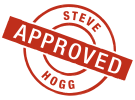
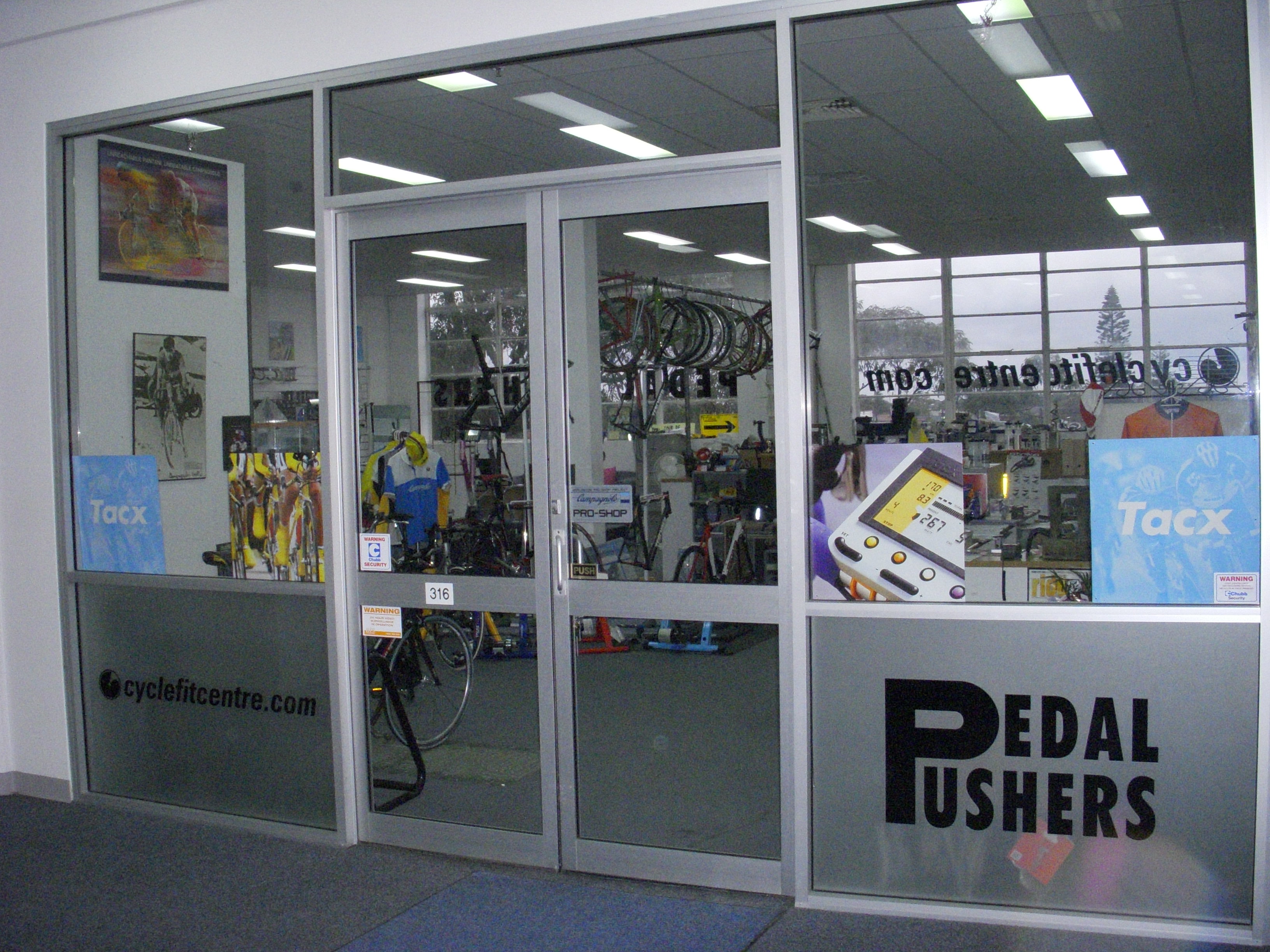

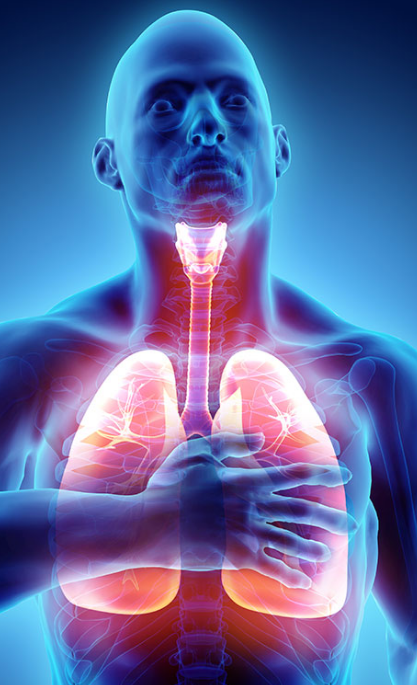
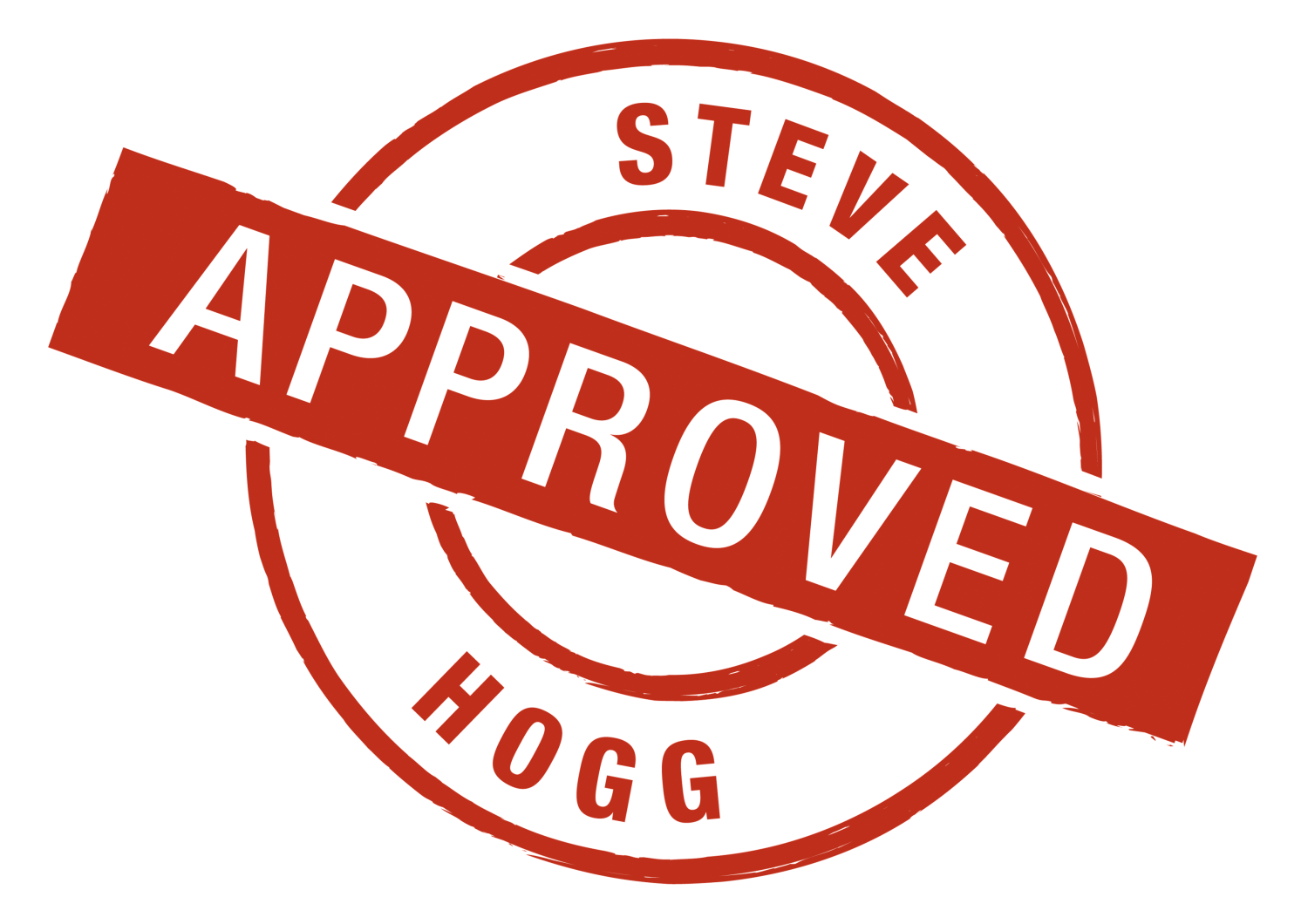

Steve sir, you are brilliant.
Steve, do you have any examples of Pro Ironman triathletes who have a position that aligns with the recommendations in this article and your TT rider article? I know you have photos on the other article, but I’d be curious how competitive those individuals are in terms of their Ironman time.
G’day Ben,
I’m a bit wary of answering your question the way that you have framed it. A good bike position is one part of the Ironman equation. There is still the question of athletic talent, which can add too or outweigh a bike position; race strategy in terms of energy expenditure and a whole lot of other stuff.
The other thing is that the focus of the article was not elite athletes but age groupers. I know some elite tri people with what I think are fairly ordinary bike positions but they maintain themselves fanatically. If you do the amount of quality stretching they do, then you can get away with a lot of things.
The other thing is that all of the issues I highlighted in the post are real but how long it takes for someone with any of those issues to be bitten hard enough by them to question what they are doing varies a lot. For some, it may be a few months of training. For others, years. The high level compensators are the ones most at risk. When you can autonomically work around problems with ease; you don’t solve the problem (though it ‘appears’ like that at the time) you just shift the load elsewhere. That means that when the inevitable eventually happens it can often be a serious injury because the body has exhausted the possibility of further compensations.
Still, if you must have a few pics, Click on this: http://www.slowtwitch.com/News/The_bikes_of_the_top_15_men_in_Kona_2010_1759.html
Have a look at-
McCormack maybe (not on the aero bars, but at least he is sitting fully on the seat)
Vanhoenacker looks pretty good, though I wonder how well he can look forward comfortably for long periods.
Bracht looks okay but same comments as Vanhoenacker.
Twelsiek is the pick of them. Can look ahead with ease, arms not overly loaded up.
Awesome post Steve.
You Quoted ” Move forward too far over the bottom bracket and you increase the size of the dead zone either side of top and bottom dead centre. ”
Will move too backward too far over the bottom bracket have the same effect ?
G’day Andy,
Yes it will.
Great post Steve
Yeah, Fignon looks like crap and Lemond looks better than normal. I was always struck at how poor his knee tracking was but in this TT he looks perfect. Another thing I noticed is that both of them have much better “aero” positions than 90% of current triathletes on aero bikes.
My favorite “hype” I have heard from bike shops is that a tri bike helps a slow iron distance athlete more than a fast one because you are out there longer. Of course this would make some sense, I guess, if wind resistance went up linearly with speed but unfortunately, that isn’t the case!
G’day Craig,
I agree with your first paragraph. Your second paragraph had me laughing. So much so that I think I’ll stick a book of anecdotes about the bike biz in the eStore soon. Thanks for that.
If you want more fodder just look at the reviews of bikes/wheels/etc.
The best advice I was given for spending money to get speed in a triathlon came from a guy who has been doing them for 30 years.
Me – “If you had $500 to spend to get speed in a long course race, what would you buy (obviously we were talking about bikes)?”
Him – Top of the line wetsuit …
His reasoning was twofold. First, after aerobars, there is not a lot of speed to be gained by spending money on a bike, even in an IM. Second, in the water the difference between a racing wetsuit and a $100 wetsuit is easliy 5 minutes for a middle to back of the pack swimmer. Add to this the fact that you will be a bit less fatigued coming out of the water which translates to more speed on the bike.
Of course the bike shop guy we were chatting with didn’t see the humour in this line of thought …
G’day Craig,
Thanks for that. I don’t know much about wetsuits but I agree with “after aerobars………….etc”. Many tri people feel like the poor relation unless they have an aero frame, aero helmet, aero, aero, aero. Then they go and ride an IM bike leg at 32km/h average. Which is fine if that is your level, but all of the expense isn’t necessary to ride at that speed.
Steve
Thanks … and I am one of those guys (slow that is) … interesting in this month’s Inside Triathlon magazine there is an article on whether 8 hours will ever be broken at Kona.
One of the intersting bits is the discussion about aero stuff and even there they talk about how little gain there is for the money. Since the late 80’s the bike splits at Kona have not improved significantly though the technology has changed dramatically. After the aero bar the improvements are modest at best.
Again, thanks for the blog – I really enjoy reading it.
You’re welcome Craig,
thank you for your contributions. That’s an interesting observation re increased technology versus small improvement in bike splits.
Servus to all,
maybe there’s a second of silence for one of the examples of this post, Laurent Fignon, French cyclist who had passed away prematurely August 31st 2010 suffering from cancer. For those who want to read more, hit
http://en.wikipedia.org/wiki/Laurent_Fignon
or better, read his book “We were young and carefree” where amongst other topics the widespread abuse of chemicals and their effect on the cycling athlete gets revealed once more.
Steve, a big thank you for this post. You wrote it with the focus on Ironman positioning, but I took out of it the information on lower and upper crossed syndromes. I reworked my stretching routine after researching a little more the syndromes and muscle groups you stated. Almost immediately I noticed significant changes in my posture, the way I stand, and the way I “carry” myself. I feel much more “open” and relaxed than I have felt in ages, both standing and riding my bike. I have also gotten sore muscles where I never had before, particularly my adductors (rotate the legs from the outside inwards). Had no idea I was unable to use them before for cycling.
From your other posts, I have now started using a pair of mbt shoes which I have customized myself by adding red Esole arches. Again, right away I noticed changes in my daily walking and standing. In particular, muscles in my torso seem to be working to keep me standing tall. I can see that when these muscles learn to work automatically again, they will help me carry my upper body in a more relaxed fashion on my bike (and in my cross country skiing).
Thanks again for the information you share. Interesting, helpful, and beneficial.
G’day Konstantin,
One of the reasons for this site is to get good,
tested info out there. When I get comments like yours, it makes me happy that people are able to improve their cycling experience. Thank you very much for taking the time to pass your experience on. Best of luck.
Steve,
Amazing article! Great relationship of Janda’s upper and lower body crossed syndromes to cycling. As a physio, I see hamstring issues in triathletes all the time and am constantly telling them go for a mountain bike ride, or a road ride, give your body a break from that position!
The reciprocal inhibition of the gluteals and hamstrings from the Iliopsaos makes a lot of sense from a physiological standpoint. The gluteals and hamstrings share a very similar nerve innervation.
Thanks,
Mike Kohm PT
Steve,
Not sure where to comment so this seemed as good as any. I found and watched (last night) the movie American Flyers with my son. Terrible movie but two things stood out. First, that a major Hollywood film was made in the 80’s focusing on pro bike racing (centered around the deceased Coors Classic) and how similar the riders positions were to current riders. The bikes are very different (obviously) but the riders all looked sleek, fast and aero. My son even commented that we need to get one of those old school bikes. Alas, I sold my last handmade steel, Super Record equipped bike about 20 years ago …
If you haven’t seen it, it is probably worth watching if you have absolutely nothing else to do.
Craig
G’day Craig,I saw it a long time ago and thought it was a bit “Hollywood” but there’s a dearth of cycling films so I enjoyed it anyway. Not as much as enjoyed “Breaking Away” though!
I agree, the movie wasn’t so bad especially considering it was made in the early 80’s… Of course, the opening sequence was filmed near where I live, so it holds a special place. “Breaking Away” is far and away better, and I watch it to begin each cycling season. Ciao.
what about ‘Le Vélo de Ghislain Lambert’ ??? now there’s a movie about cycling!
G’day Doug,
I’ve seen that one and it is a hoot. The narrator sounds like he has taken too much Valium. My favourite scene is when the pro has had too much ‘help’ of the illegal kind and starts weaving along the road until he gets slower and slower and then falls off into a ditch.
Hi Steve
If you want a realistic cycling film then go for a ” A boy , a girl and a bicycle” It’s about club cycling in Northern England in the late 40s or early fifties. Hard to get hold of though, It includes Diana Dors , England’s answer to Monroe, distracting cyclists from the straight and narrow.
G’day Edward,
I’ve spent a bit of time looking for this one on your recommendation without success. Any idea where to look?
Jason
I have my kids “hooked” on Breaking Away – great film. I watch at least 2 times a year when I need a little motivation in my life.
Craig
Steve
It comes full circle – I did a full aquabike this weekend (Ironman minus the marathon) and was amazed at the number of people riding bikes that are worth more than my car that had positions that made no sense. Most of them were way forward and at the same time had arm rests at or above seat height … it was nice passing them on my “comfort bike”.
Craig
G’day Craig,
with hindsight I should have mentioned this in the post.
It’s common. People are convinced then need to move forward to become aero and can’t cope with the demands of maintaining position, particularly the weight transfer forward. So they raise the bars, often quite high, to relieve the strain. This leaves them with the worst of both worlds; poor leverage from too far forward a seat position and poor aerodynamics as well.
Glad that you went well.
Steve
And another simplistic observation (this one made after a question from my son who came to watch), most age group middle to back of the pack athletes suffer an ever greater problem from the far forward position – over worked hip flexors. It is easy to see in the run – they look like robots running with their rear ends tucked in, hips in the front plane of the body and shuffling strides. The more advanced athletes have clearly either compensated better or have better functionality because they still look like runners at that point.
I wonder how much energy one gives up running like that and if in any way it is compensated for by the fact that at least they have fresh hamstrings.
Craig
G’day Craig,
I went into some detail about that in the post above.
Unfortunately, while the hamstrings are fresh, the functional picture often becomes as mentioned in the post above. Too far forward loads the quads. Short, tight hip flexors working in a cramped position on the bike can often become hypertonic as soon as the athlete stands up (which requires lengthening the hip flexors) at T2. That hypertonicity reciprocally inhibits the glute max and pulls the top of the pelvis forward putting pressure on the low back. The hamstrings then try and take over the role of hip extension from the glute max which they can sort of do, while at the same time trying to pull the pelvis back into something resembling reasonable alignment.
This is what you are seeing as the bums tucked under running style. The athlete is trying to relieve the pressure on the low back but at the same time hammering the hammies which are trying to work posturally on the pelvis to oppose the psoas in the main, but ineffectively because the hamstrings don’t have as long a lever arm on the pelvis as the psoas and rec fem. I don’t know any figures, but it isn’t an efficient way of running and it comes about because of poor posture off the bike leading to a predisposition to this sort of thing and then is tipped over the edge by too far forward a seat position on the bike.
If the bike positions is good, the athlete should be able to just exit T2
running freely.
Steve
Wish I had a camera on the bike this weekend – did an Iron distance tri in North Carolina in absolutely brutal conditions (cold, mist and rain, 15-25mph winds mostly from the front for the first 75+ miles) and the cold was unexpected so the majority of us were under dressed. It was awful. What made it interesting was to see a huge number of riders (near me, couldn’t elaborate on the faster or slower ones) riding really high dollar tri bikes into a god awful wind with their hands on either the bullhorns or the arm pads. I am tooling along on my roadie either in the drops or when it got really strong, with my forearms on my bar tops, hands hanging off the front (looking very Euro pro in my mind) to get some relief from the wind and these guys and gals were sitting up like sails.
In every case it appeared that their position was set: way forward, bars very low (though definitely not in all cases), seat far too high. My greatest joy came from passing a guy on a Pinarello TT bike equipped with Firecrest 404’s – that bike cost more than my car did when it was new.
To be clear, I am not bragging here – my time was middle to back of the pack on the bike (normal for me). I was just shocked that in conditions built for somebody to ride aero the added stress seemed to cause a huge number of riders to abandon that position for one that was clearly inferior to my position in basically every way.
The other advantage was in the run I was going well and feeling none of the issues you covered above until my right hamstring pulled late in the race (to top off the fun of the day there were 7 steep downhill run sections on each of the two loops – they really hammered us in the cold).
Without your input and setting my up with Jerry, I might have been one of them. Instead I came through in a PR, relatively unscathed. Thanks!
Craig
G’day Craig,
That doesn’t sound like a fun race! Re your comments. I’ve
watched enough Ironman events to know that a significant portion of the field are sitting up in the second half of the bike leg because they have a position they cannot sustain under race conditions for the duration of the event.
The power of marketing at blinding people to the obvious is a constant source of amazement to me.
Steve, thank you for the great post as always. I was wondering though; we know that ‘Aero bars are not worth 10 seconds per km’, and that Greg only beat his French counterpart in the last kilometer. However, Greg was using the aerobars for the majority of the race. Wouldn’t this speculatively mean that, if Greg hadn’t used aerobars, he would’ve needed more than just 10 seconds to beat Fignon, because he may not have been as fast over the first 39km of the race?
G’day Stevefan,
Yes, it does and I don’t deny that. I just maintain
that Lemond’s win wasn’t as simple as “Lemond only won because of aero bars” which was the widespread consensus at the time and answered the need of many people to have simple answers to sometimes complex circumstances.
And it was a 24km or nearly 25km TT, not 40kms.
Hi Steve
Do you recommend any particular make/model of aero bars from a bike fitting perspective?
Thanks
Dan
G’day Daniel,
Funnily enough this is the subject matter of an upcoming
post. Briefly, I don’t like one piece bullhorn / aero bar combo’s because if the angle of the bullhorns is changed, then the angle of the aero extensions is changed as well. Sometimes in an effort to set the angle of the aero bars at a good position, the bullhorn bars have to be set at a ridiculous angle.
What I much prefer is a separate bullhorn bar and aero bar so that each can be adjusted without affecting the other. As far as aero bars I don’t like the dead straight ones because they force an unnatural angle on the wrists. I don’t like the S bend extensions because to grip them comfortably, which is always on the ‘S’ means that the hands have to be moved a significant distance to the ends of the bars to change gears.
That leaves only the ski bend aero extension shape as being ideal for human hands and proximity of gear shifters. I don’t know who designs the others but they aren’t designed for humans.
An ideal aero bar has a stand alone bullhorn bar with a moderate reach of 110 – 120mm with the option of a flat bullhorn bar for the Tri guys and gals and a drop bullhorn bar for the road TT people. On it should be mounted a completely separate aero bar. The aero bars should have adjustable extensions, pads that have height, width and fore and aft
adjustment. HED and some Oval Concepts models are the closest out there to
achieving all of that.
I get the impression that a lot of this stuff is designed by people who
have never had to use them. I also get the impression that marketing plays
a large part in their design rather than utility.
Steve
Surprisingly enough, the bottom of the line Felt TT and tri bikes come with bars just as you describe. The higher end ones, however, do not. Also, the profile T1+ would seem to fit the bill except that they are just a pain to adjust – not a well thought out design.
A guy I know loves the straight bars saying “they allow you to pull up to get extra leverage”. I guess that is a factor in a 6 mile TT but the fact that almost all long distance tri bikes come spec’ed with them is just insane.
I look forward to that post.
Depending on purpose i think the Oval, Profile T2 or Easton’s are not too bad in terms of design.
Whilst the Profiles are S-Bend…i find these are not too bad for TT’s or shorter TRI’s They are also good in that the Pads can be adjusted independently of the base bars and also the extension, which is handy in some instances, particularly if using on a standard road bike, where the pads need to be further back from the bar tops most of the time. Extension reach is also relatively easy to adjust without cutting on these brands.
I also much prefer a separate base and tri bar combo for those reasons plus the tilt angle reason.
I like cervelo tt bikes for the reason that they are fairly adjustable at the front end, and used to come with separate base bars. They’ve always had those stupid vision extensions though and now have started to come with integrated bar/extension setups – i dunno why…
G’day Stuart,
I agree. I don’t want to pre empt the upcoming post too
much but most aero bars are crap. To be more polite, the human is expected to adapt to the aero bar, not the other way around which is the way that it should be.
Yeah, its like the forgotten part of buying a “TRI” bike. Customers want the latest bike with the racy looks and integrated bars, but never think about adjusting it to suit them.
You should see some of the looks I get when I ask them if they’ve considered how they will adjust it to suit them!
Stuart
That is easy, drop the stem all the way, shove the seat forward all the way and put the arm rests side by side. Come on, that is the way EVERYONE rides! 🙂
Which is what helps keep me in biz.
So true. I tried it for a few TT’s as “experience” so I could at least comment on how it felt to customers etc.
I don’t know how some people do it!
And I certainly can see why triathletes have so much trouble running off that sort of position.
I could hardly walk when I did it, let alone run!
Interestingly, ive just done 2 pb 20km TT’s on a much more conservative position and I’m nowhere near race fit. My seat is further foward than the average person, but in relation to my road bike, its only a bit further forward.
Stuart
I am a functional mess (If you don’t believe me, ask Jerry) and fairly sensitive to my position. I have a road position that has me lower (saddle, not bars) and further forward (again, saddle rather than bars) than is considered “conventional”. I rode a recent TTT in the “tri” position and while I performed pretty well it wasn’t pretty. The guy I was riding it with said that every time I was pulling he was getting sea sick watching my hips. The next day I just plain hurt.
I returned to a “sensible” position – adjustments made based upon Steve’s post to the road position Jerry set me up in and I can hold the same speed without being a wreck. I am sure that if I was riding 15kph faster things might be different but us slow old guys have to dance with the date we brought …
My most recent Ironman was done on a road bike with no extensions … I ran so easily off the bike it was actually enjoyable. I am looking forward to trying my “Steve Tri” position in a half this spring to see what I can do.